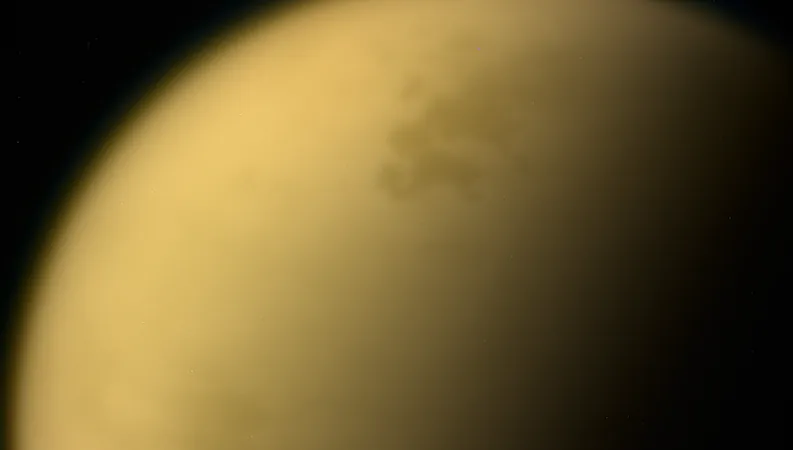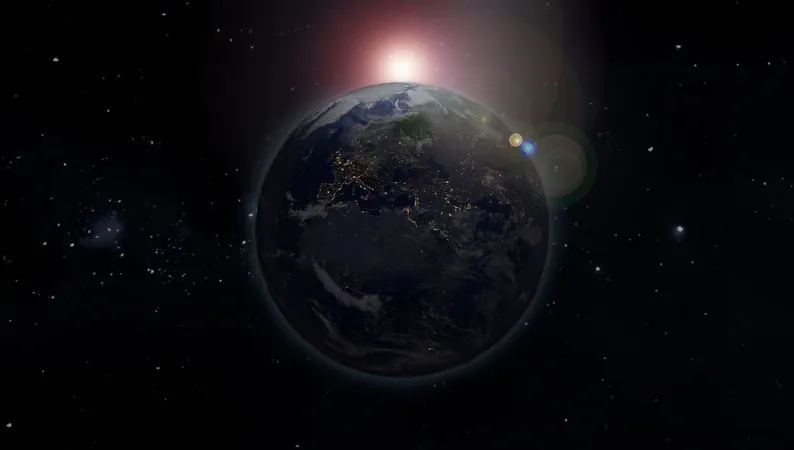
Unraveling the Mysteries of Titan's Atmosphere: The Role of Hydrogen in Organic Production
2025-01-02
Author: Sarah
Introduction
Recent laboratory investigations into photochemical reactions that mimic the atmospheric conditions of Titan, Saturn's largest moon, are shedding light on the complex formation of gases and aerosols and their resulting impact on organic chemistry. These studies are crucial for understanding the potential for life in extraterrestrial environments.
Experimental Approach
By simulating Titan-like atmospheric conditions, researchers are able to explore how various environmental factors affect the creation of organic molecules in the gas phase. The experiments utilize far-ultraviolet radiation to induce reactions between methane (CH4) and nitrogen (N2), with a focus on the different products generated over time.
Role of Isotopes
A significant aspect of the study involves using stable isotopes to serve as tracers, which helps to decipher the intricate pathways of these chemical reactions. The research reports findings from a time-resolved analysis of gas-phase products generated in controlled experiments—specifically, those consisting of 5% methane and nitrogen within a closed system.
Experimental Setups
To differentiate the influences of hydrogen, two experimental setups were employed. One setup effectively removes hydrogen using a palladium membrane, creating a hydrogen-poor environment, while the other retains hydrogen throughout the experiments, allowing for a hydrogen-rich scenario.
Findings and Implications
Notable gas-phase products detected in the study include ethane (C2H6), propane (C3H8), as well as various butanes and pentanes, with significant variances between the hydrogen-poor and hydrogen-rich experiments. These experiments underscore hydrogen's pivotal role in the formation of critical organic compounds like hydrogen cyanide (HCN), n-pentane (n-C5H12), isopentane (iso-C5H12), and acetonitrile (CH3CN).
Conclusion
The findings not only provide insights into the chemical composition and isotopic ratios of Titan's atmosphere but also enhance our understanding of photochemical pathways under different hydrogen conditions. This knowledge is essential for astrobiologists and planetary scientists as they explore the moon's potential for harboring life.
With ongoing studies in the works, the implications of this research may extend beyond Titan, offering clues about organic chemistry in other celestial bodies with similar environmental conditions. Could the secrets to life's building blocks be lying on distant worlds? Stay tuned as we continue to unravel the cosmic tapestry of our universe!

 Brasil (PT)
Brasil (PT)
 Canada (EN)
Canada (EN)
 Chile (ES)
Chile (ES)
 Česko (CS)
Česko (CS)
 대한민국 (KO)
대한민국 (KO)
 España (ES)
España (ES)
 France (FR)
France (FR)
 Hong Kong (EN)
Hong Kong (EN)
 Italia (IT)
Italia (IT)
 日本 (JA)
日本 (JA)
 Magyarország (HU)
Magyarország (HU)
 Norge (NO)
Norge (NO)
 Polska (PL)
Polska (PL)
 Schweiz (DE)
Schweiz (DE)
 Singapore (EN)
Singapore (EN)
 Sverige (SV)
Sverige (SV)
 Suomi (FI)
Suomi (FI)
 Türkiye (TR)
Türkiye (TR)
 الإمارات العربية المتحدة (AR)
الإمارات العربية المتحدة (AR)